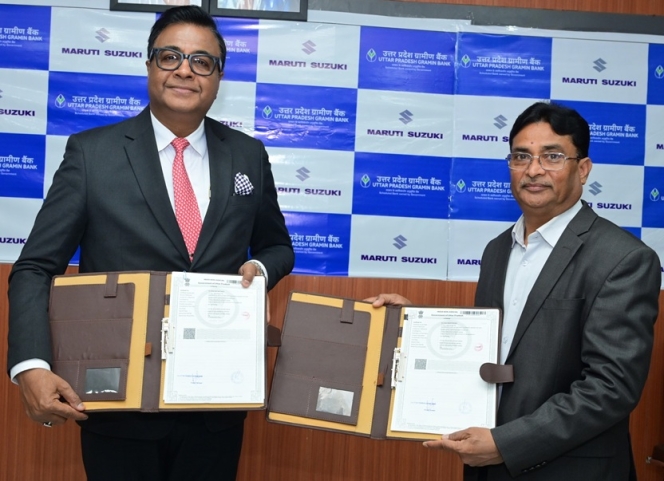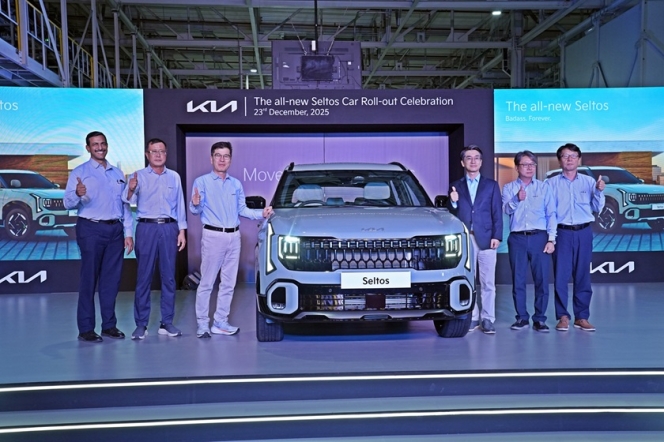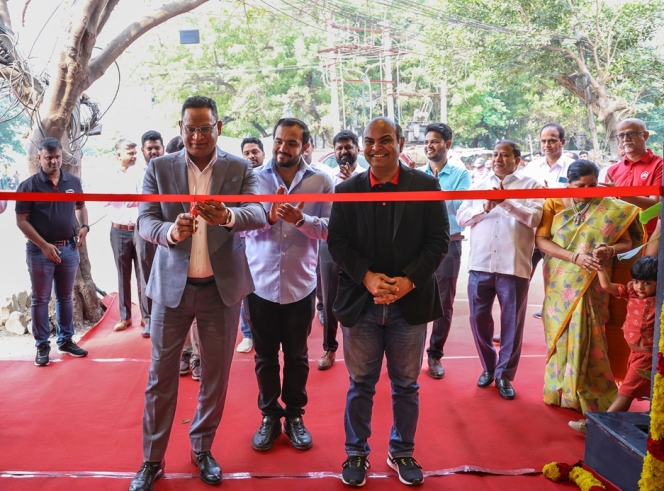
Conceived as pure electric mobility, the new car will redefine the Sports Activity Vehicle (SAV) concept. The newly developed, precise and minimalist design of the BMW iX is representative of a trailblazing generation of cars poised to redefine the driving experience, the feeling of space inside and the relationship between vehicles and those on board.
The BMW iX is created to provide quality of life and wellbeing for drivers and passengers. The vehicle harnesses the latest innovations in the fields of electrification, automated driving and connectivity to deliver a mobility experience which puts people more than ever at its heart. The clear and minimalist design of the car’s exterior showcases a new form of mobility geared squarely to the needs of the vehicle’s occupants. In contrast, the interior design offers those on-board innovative options for using the time during a journey enjoying relaxation, safety, security, and a new form of luxury in the process.
The concept and design of the BMW iX are rooted in an all-embracing approach to sustainability. It is reflected in the areas such as optimised aerodynamics, intelligent lightweight design and extensive use of natural and recycled materials that help to create a cutting-edge sense of luxury and comprehensive feeling of wellbeing on board.

The car comes with the fifth generation of BMW eDrive technology – which encompasses the two electric motors, power electronics, charging technology and the high-voltage battery which guarantees exceptional efficiency and long-range. The power unit is manufactured using sustainable materials without the use of critical raw materials like rare earth elements, and by the most recent calculations will develop maximum output of more than 370 kW. This unit will be enough to power the car from 0 to 100 km/h (62 mph) in under 5.0 seconds. At the same time, the vehicle’s apparent aim is to post an exceptionally low combined electric power consumption figure for its segment of less than 21 kWh per 100 kilometres (62 miles) in the WLTP test cycle.
The BMW iX comes with a new charging technology that enables DC fast charging at up to 200 kW. This technology allows the vehicle to be charged from 10 to 80 percent of its full capacity in under 40 minutes. Ten minutes charge can feed enough energy into the battery to increase the car’s range by more than 120 kilometers (75 miles). On a standard Wallbox at 11 kW, the high-voltage battery can be charged from 0 to 100 percent in less than eleven hours. The batteries in the car are designed as a part of a long-term resource cycle, making it exceptionally easy to recycle. Besides, the power used to produce the cells, and the high voltage battery comes exclusively from renewable sources contributing to an eco-friendly future.
The new technology toolkit making its debut in the car has computing power in the areas of automated driving and digital services, 20 times more than the previous models. As a result, around double the amount of data from vehicle sensors can be processed than was previously possible.
Talking about the technology and the computing power of the car, Frank Weber, Member of the Board of Management of BMW AG said, “We are setting new industry standards with the technology in the BMW iX”. The iX has more computing power and more robust sensor technology that will help in new and improved automated driving and parking functions and using the high-performing fifth-generation electric drive system.
The kidney grille at the front has been completely blanked off and converted into an intelligence panel. The camera technology, radar function and other sensors are integrated seamlessly into the grill behind a transparent surface. The grill has reinvented itself as an innovative and multifunctional high-tech interface for the advanced driver assistance systems which paves the way for automated driving. Developed and produced at BMW’s LuTZ lightweight design and technology centre the kidney grille presents a technological showcase for intelligent mobility. Also, the material used to make the intelligence panel on the kidney grille is self-healing.
Like the kidney grille, all the technologies are subtly located on the car. For example, an array of sensors and cameras are discreetly placed around the vehicle to help with automated driving. The filler neck for the windscreen washer fluid is concealed under the BMW logo on the bonnet. The rear-view camera has been integrated into the BMW logo on the tailgate. Technology stays in the background and only becomes apparent as and when the relevant functions are called into action.
The exterior design of the car features the slimmest headlight units ever on a series-production model from the carmaker. The flush-fitted door handles, the frameless side windows, the tailgate – which has no separation joints and extends across the whole of the rear and the likewise extremely slim rear lights carry forward the minimalistic theme.
 On the inside the newly developed seats with integral head restraints and a vast electrochromic panoramic glass roof that imbibes the feeling of spaciousness and gives the cabin a luxurious lounge-like ambience. The all-new architecture of the car adds to the straightforward functionality that revolves around the needs and emotions of the driver and the passengers. The missing central tunnel adds to the open, airy feel while allowing extra legroom.
On the inside the newly developed seats with integral head restraints and a vast electrochromic panoramic glass roof that imbibes the feeling of spaciousness and gives the cabin a luxurious lounge-like ambience. The all-new architecture of the car adds to the straightforward functionality that revolves around the needs and emotions of the driver and the passengers. The missing central tunnel adds to the open, airy feel while allowing extra legroom.
The interior involves shy technology, which makes previously visible functions hidden and creating stylish elegance. The technology represents the panels wherein the controls on the central console of the car are placed. It only becomes visible when it is needed making it intuitive to use rather than seeming overly complicated. The shy tech approach for the interior can be seen in several features, including speakers integrated out of sight, intricately styled air vents, heated surfaces and the discreet recessing of the Head-Up Display’s projector into the instrument panel, so it is almost invisible.
The BMW iX is expected to hit the market in late 2021, showcasing the best of vehicle maker to come in the future. The company plans to launch 20 plus fully electric cars shortly, and the use of sustainable material to build cars show its concern towards a greener and better tomorrow. (MT)
Citroen India Delivers 51 C3 CNG Vehicles To Luthra Group
- By MT Bureau
- December 24, 2025
Citroen India, in partnership with its dealership La Maison Nanavati, has completed the handover of 51 Citroen C3 CNG vehicles to the Luthra Group. The ceremony took place at the Luthra Group’s headquarters in Surat.
The delivery is part of Citroen's strategy to expand its presence in tier-II and tier-III markets by providing mobility solutions to businesses and individuals.
The Citroen C3 CNG is designed for high-usage environments and daily commutes. The model includes several features tailored for the Indian market, integration of a factory-fitted CNG kit to manage running costs. A suspension system tuned specifically for local road conditions. Provisions for cabin space and air-conditioning systems designed for high-ambient temperatures.
The handover to Luthra Group represents the brand's focus on cost-efficient transportation. By targeting the regional business sector, Citroen India aims to strengthen its footprint in Gujarat and the broader Indian mobility market.
The C3 CNG is positioned as a solution for users requiring reliability and low operating expenses without compromising on ride comfort.
Maruti Suzuki India Partners Uttar Pradesh Gramin Bank For Retail Financing
- By MT Bureau
- December 24, 2025

Maruti Suzuki India has signed a Memorandum of Understanding (MoU) with Uttar Pradesh Gramin Bank, a regional rural bank, for vehicle retail financing partnership on new cars, pre-owned vehicles and commercial vehicles.
This collaboration marks the 50th retail finance partner for Maruti Suzuki India. The partnership is intended to use the bank’s network to provide credit options to a range of customer profiles, particularly in rural and semi-urban regions.
The partnership aims to increase the accessibility of Maruti Suzuki products through, tailored finance schemes designed for rural and regional customers.
Partho Banerjee, Senior Executive Officer, Marketing & Sales, Maruti Suzuki India, said, “Our partnership with Uttar Pradesh Gramin Bank marks a significant milestone as we onboard our 50th retail finance partner. This reinforces our commitment to making car ownership simpler and more affordable for customers across India. By expanding our reach through this strategic alliance, we aim to empower buyers with competitive, customer-friendly financing solutions that enhance the overall purchase experience. We remain focused on delivering seamless, tailored finance options, and this collaboration strengthens our vision of providing the Joy of Mobility to aspiring Indian consumers.”
Yadav S. Thakur, Chairman, Uttar Pradesh Gramin Bank, said, “At Uttar Pradesh Gramin Bank, empowering customer aspirations is at the heart of everything we do. Our partnership with Maruti Suzuki, a leader in the automotive industry, is a strategic step towards enhancing our service offerings and delivering greater value to our customers. This collaboration aligns with our 'Customer-First' mission, enabling us to provide accessible and affordable vehicle financing solutions. We look forward to helping more individuals and families across the country realise their dream of owning a Maruti Suzuki vehicle.”
Kia India Commences Production Of New Seltos In Anantapur
- By MT Bureau
- December 23, 2025

Kia India has started production of the latest generation Seltos at its manufacturing facility in Anantapur. The company has confirmed that prices for the mid-SUV will be announced on 2 January 2026.
The Anantapur plant, established in 2019, serves as a hub for both the Indian domestic market and international exports. The facility uses automation and a local workforce to manufacture the Seltos, which was the first model produced by the company in India.
The new model is built on Kia’s K3 platform, which has been engineered to increase structural rigidity and improve suspension damping. The vehicle has grown in size compared to its predecessor to increase cabin space and stability. It has 4,460 mm of length, 1,830 mm of width and a wheelbase of 2,690 mm.
The exterior design follows the ‘Opposites United’ philosophy, featuring a ‘Digital Tiger Face,’ LED projection headlamps, and alloy wheels with neon brake callipers.
The vehicle integrates several digital interfaces and driver assistance systems. It features an upgraded Kia Connect 2.0 suite with over-the-air (OTA) software updates and a proximity unlock function.
In terms of safety, it gets 24 features as standard, while ADAS Level 2 offers 21 autonomous features to assist the driver. The Kia Seltos SUV comes with three engine options – 1.5-litre Petrol producing 115 PS of power and 144 Nm of torque, 1.5 T-GDI Petrol producing 160 PS of power and 253 Nm of torque and a 1.5-litre diesel engine producing 116 PS of power and 250 Nm of torque.
Transmission choices include a 6-speed manual (6MT), intelligent manual (6iMT), IVT, 7-speed dual-clutch (7DCT) and a 6-speed automatic (6AT). The model will be sold in four trims – HTE, HTK, HTX and GTX – with additional option variants and an X-Line styling pack.
Gwanggu Lee, Managing Director & CEO, Kia India, said, “The roll-out of the All-New Kia Seltos marks a proud milestone for Kia India. Seltos has long set benchmarks in the mid-SUV segment, and this new generation represents a bigger, bolder, and more progressive evolution shaped by insights from Indian customers. With production now underway at our Anantapur facility, our teams are fully geared to ensure customers can take delivery of their all-new Seltos without long waiting periods. We are confident the all-new Seltos will once again redefine expectations in the segment and strengthen Kia’s leadership in India."
“The new Seltos looks fantastic. The Anantapur team, together with our supplier partners, have done an outstanding job in delivering our customers a great looking, significantly bigger, technologically progressive and safe vehicle with impressive functionality and connectivity,” he said.
- Citroen India
- Jeep
- Stellantis
- Citroen 2.0
- Shailesh Hazela
- Kumar Priyesh
- Sree Venkata Teja Kethineni
- VTK Automobiles
Citroen India Opens 126th Outlet In Chennai Under Citroen 2.0 Strategy
- By MT Bureau
- December 23, 2025

Stellantis-owned French automotive brand Citroen India has inaugurated its 126th point of sales and service (POS&S) facility in Chennai, continuing the expansion of its network under the ‘Citroen 2.0 – Shift Into The New’ strategy.
The new 3S (Sales, Service and Spares) facility is located at Chitlapakkam, near Chrompet. It is an extension of the partnership with VTK Automobiles, which now operates five Citroen touchpoints in the city. The outlet functions as a ‘Stellantis Brand House,’ allowing customers to access both Citroen and Jeep brands within a single space.
Since the announcement of the Citroen 2.0 strategy, the brand has increased its network by 48.6 percent. Over the last six months, the company added 43 points of sale through its network expansion programmes. Citroen expects to reach a total of 135 outlets by the end of the year, with further operations planned for the north, west, and east of India.
The strategy focuses on several pillars – deepening the domestic supply chain for India-centric products. Expanding the dealer footprint into Tier 2 and Tier 3 locations. Using digital tools and unified spaces for sales and aftersales services.
Shailesh Hazela, CEO and Managing Director, Stellantis India, said, “The expansion of Stellantis network further with VTK dealership in Chennai marks another important step in Citroen and Jeep India’s network growth strategy. Chennai is a key market for us, and this upgraded facility will enable us to serve our customers better with a seamless sales and ownership experience. Aligned with our Citroen 2.0 strategy, we remain committed to strengthening our dealer partnerships and building a robust, customer-centric network across the country.”
Kumar Priyesh, Director Automotive Brands, Stellantis India, said, “We have grown our network by almost 48.6 percent since we announced the Citroen 2.0 strategy and have been able to expand our operations in different parts of country: adding tier 2/3 locations while further strengthening in Metro/ Tier 1 cities. Through project Visitar, Network Expansion Program and expansion in new geographies we added over 43 POS in the last 6 months and are already in advanced stages to start additional operations in North, West and Eastern parts of the country and expected to close the year with 135 POS for Citroen.”
Sree Venkata Teja Kethineni, Dealer Principal, VTK Automobiles, said, “We’re happy to partner to this pivotal shift in automotive retail, proudly representing Jeep and Citroen. Our dual-brand strategy empowers us to deliver a truly elevated and distinctive experience – whether customers seek rugged performance or refined sophistication. With passion, professionalism and personalised care at the core, our team is committed to exceeding expectations and upholding the global standards these iconic brands represent.”
The facility includes a service centre equipped with diagnostics and digital tools. Staff members are trained across both Jeep and Citroen product lines to provide technical support and product information.






Comments (0)
ADD COMMENT